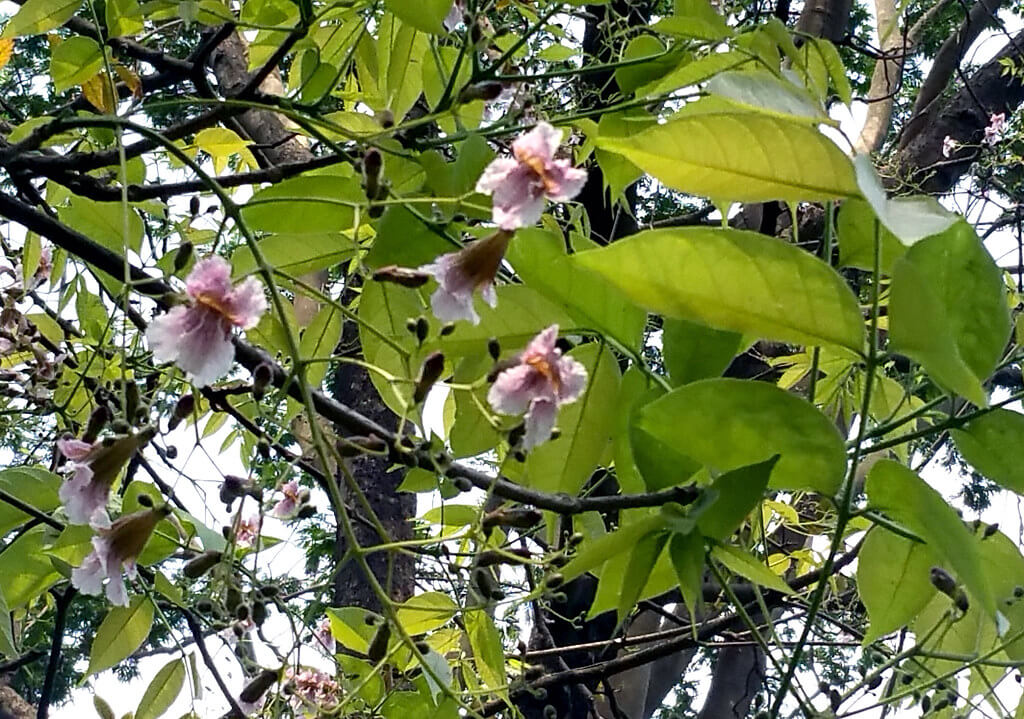- +033 2572 7171
- info@dhanvantary.com

4.5 Rating | 4500 Review

4.5 Rating | 4500 Review
Patala (Stereospermum suaveolens) tree is around 25m long. It is cylindrical in shape, extremely externally brown to creamy, rough due to vertical fissures, cracks, ridges and transverse fine lenticels, internally dark brown, lamellation of stratification due to presence of concentric bands of fibers.

Patala has various therapeutic properties like diuretic, cardiac tonic, anti-inflammatory. Its different parts are used in the management of different disorders. Patala roots are useful in the balance of vata and their related disorders. Patala flowers are cold in potency and are useful in the management of blood related disorders.
Patala Plant contains naphthoquinone lapachol. Patala Root bark contains 6-sitosterol, n-triacontanol. Root, heart-wood contains lapachol, dehydro-a-lapachone and dehydrotectol and the Leaves contain flavone glycoside scutellarein, dinatin-7-glucuronide. Seeds of the plant contains non-drying oil, Bitter substances, sterols, glycosides and glyco alkaloids. Its Root bark contains bitter substance. Lapachol isolated which showed highly significant activity against walker 256 carcinoma. Lapachol, Scutellarein, Dehydrotectol, ceryl alcohol, oleic, Palmitic, Stearic acid.
It has two varieties mentioned by Bhavaprakasha as Patala and Sitapatala. Patala is identified as Stereospermum suaveolens and Sitapatala as Stereospermum chelonoides.
Kingdom
Plantae
Order
Lamiales
Family
Bignoniaceae
Genus
Stereospermum
Species
S. chelonoides
It is found in North circus and Deccan, in deciduous forests; Western Ghats and also in deciduous forests, in the hills of Mysore, Malabar and Travancore, Scarce.
|
Hindi / Sanskrit |
English |
||
|
Rasa |
Tikta, Kasaya |
Taste |
Bitter, Astringent |
|
Guna |
Laghu, Rooksha |
Physical Property |
Light, Dry |
|
Virya |
Anusna |
Potency |
Hot |
|
Vipaka |
Katu |
Taste Conversion After Digestion |
Pungent |
Note: its flower is Sheeta Virya in nature (coolant).
Patala is tridosahara i.e. balances all the three doshas (vata, pitta and kapha).
Root bark, flower, seed, leaf, kshara
No known side effects. Safe to use in lactation period and in children. To be used only under medical supervision during pregnancy.
